Sarsfieldscourt [Old]
Houses within 10km of this house
Displaying 89 houses.
Houses within 10km of Sarsfieldscourt [Old]
Displaying 89 houses.
| House name | Description | |
|---|---|---|
| Vernon Mount | Built by Atwell Hayes in the 1780s, Vernon Mount was the residence of John Leslie in 1814 and of O. Hayes in 1837. Soon afterwards it was leased to William Lane and he was the occupier at the time of Griffith's Valuation, holding the house valued at £55 from Attiwell Hayes. The Hayes sale rental of 1851 describes this house as "a large handsome building erected by the present owner's father at a cost of £5000". It was leased by the Hayes family to William Lane in 1839. A building still exists at this site. | |
| Ardmore House | Richard Roberts held this property in fee at the time of Griffith's Valuation, when it was valued at £55. Lewis refers to is as the seat of J. Roberts in 1837. In 1943 the Irish Tourist Association Survey mentions it as the birthplace of Lieutenant Richard Roberts, Master of the ship, Sirius, the first steamship to cross the Atlantic. Ardmore is still extant and occupied. | |
| Fota House | Originally built as a hunting lodge for the Smith Barrys in the 18th century and enlarged in the 1820s to the design of Sir Richard Morrison with further 19th century additions. Valued at £89 and held by James H.S. Barry in fee at the time of Griffith's Valuation. Occupied by Lord Barrymore in 1906 and valued at £160. Inherited by Major and the Honourable Mrs Bell. The Irish Tourist Association survey provides details of some of the paintings in the house and exotic plants in the gardens. Bence Jones writes that Fota was sold to University College, Cork in 1975 following the death of Mrs Bell. It is now in the care of the Irish Heritage Trust and after restoration was reopened to the public in 2009. http://www.fotahouse.com/display.php |

|
| Bishop's Island | Grice Richard Smyth held buildings valued at £25 in the townland of Bishop's Island at the time of Griffith's Valuation. ''Burke's Irish Family Records'' refers to his father Henry Mitchell Smyth of Bishop's Island. In 1786 Wilson notes Bishop's Island as the seat of Mr. Mitchell. | |
| Leamlara | The seat of a branch of the Barry family for over two centuries, the house was demolished in 1966. At the time of Griffith's Valuation it was valued at £36 and held by Penelope Barry in fee. In the sale rental of 1851 the house is described as "built on a porous rock, which keeps the ground floor always dry". In 1906 the house was occupied by Henry S. Barry. The location of this house now appears to be close to or part of a reservoir. |
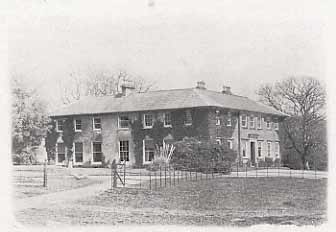
|
| Windsor House | Dominick Sarsfield was living at Windsor, Cork, in 1814 and by 1837 it was the property of J. Martin. Joseph Martin held this house valued at £13.10 shillings from the Earl of Bandon in the early 1850s. Windsor House is still extant and occupied. |

|
| Killahora House | J. Martin is recorded as resident at Killahora in 1837. At the time of Griffith's Valuation John Martin held a house valued at £25 from the Earl of Bandon. A house is still extant at this site. | |
| Union Lodge | This house was the residence of the Reverend William Gifford in 1837. At the time of Griffith's Valuation Hughes Martin was the occupier. He held the property from William Coppinger and the buildings were valued at £21. | |
| Tullagreen | Occupied by Robert Martin in 1814 and by Hughes Martin in 1837. The house was recorded as unoccupied at the time of Griffith's Valuation. Hughes Martin was the immediate lessor and the house was valued at £19+. |

|
| Garrancloyne House | This was the original home of the Coppingers of Middleton. A substantial house with a gate lodge is marked on the first Ordnance Survey map but by the time of Griffith's Valuation the house with the largest valuation in this townland was £2. It was occupied by Hughes Martin and held from William Coppinger.In 1786 Wilson refers to "Killycloyne" as a seat of the Martin family in this area. | |
| Killora Lodge | This house was the residence of Reverend R. Berry [Bury] in 1837 and was unoccupied at the time of Griffith's Valuation. Reverend Robert Bury was the immediate lessor and the buildings were valued at £20. It is still extant and occupied. |

|
| Toureen Lodge/Ashbourne | At the time of Griffith's Valuation the Reverend Robert Bury was occupying a house in this townland valued at £17 and held from the Earl of Bandon. It is labelled Toureen Lodge on the 1st edition Ordnance Survey map and as Ashbourne on the 25-inch edition of the 1890s. In the twentieth century it became famous for its well-known gardens, laid out by Richard H. Beamish. |

|
| Johnstown House | Johnstown was the home of Sarsfield Esq in the 1770s and 1780s. William Martin is recorded as resident at Johnstown in 1814 and Mrs Palmer in 1837. John Courtney occupied the house valued at £21+ in the early 1850s. He held it from the Earl of Bandon. The original house is not extant. | |
| Anngrove | Bence Jones writes that this was originally a Cotter residence, sold to the Earls of Barrymore before the mid 18th century. Dobson Esq was resident in the 1770s and 1780s. By 1814 Francis Wise was resident and was still resident at the time of Griffith's Valuation, when the house was valued at £30 and held from Sir William Clarke. The house was later inherited by the Gubbins family. Demolished post 1950. | |
| Sunville | A property held from Francis Wise in the mid 19th century by Thomas Donovan. The buildings were valued at £15.10 shillings. In the 1870s Thomas Donovan of Sunville, Johnstown owned 174 acres in county Cork. | |
| Barry's Lodge | Occupied by D. Barry in 1837 and by Henry Barry in the early 1850s. He held the property valued at £28 from Samuel Reeves. | |
| Cloneen | Leet records - Hoare esq as resident at Cloneen, Middleton, in 1814. In the mid 19th century Robert Lunham held a house valued at £20+ from Bingham Sarsfield in this townland. Sarsfield held the property from Abraham Devonsher. When Cloneen was advertised for sale in 1870 it was occupied by Joseph Sheedy. Bingham Sarsfield of Cork owned 266 acres in county Cork in the 1870s. A house is still extant at the site. | |
| Springhill | This house was a Wakeham home from at least the mid 1770s. William Wakeman was resident at Springhill in 1814 and W.J. Wakeham in 1837. Joseph B. Wakeham held Springhill in fee at the time of Griffith's Valuation when the buildings were valued at £15+. | |
| Brooklodge House | A house and paper mill valued at £30 held by Mary Eliza Phair from the Reverend Robert Bury at the time of Griffith's Valuation. This Phair family were involved in paper mills in a number of townlands in this locality. | |
| Brookville | Home of Cornelius O'Callaghan who held it from the Reverend Robert Bury in the mid 19th century. The buildings were valued at £35. |

|
| Blossomgrove | Blossomgrove was the residence of William Casey in the early 1850s. He held the house valued at £22 and 335 acres from Simon Dring. A house is still extant at the site. | |
| Butlerstown | Nathaniel C. Martin held a house, offices, foreman's house and spade factory valued at £25 from Francis Beamish. The property is labelled Butlerstown House on the 25-inch Ordnance Survey map of the 1890s when the spade factory is no longer visible. There is still an extant house at the site. | |
| Corbally | ''Burke's Irish Family Records'' describes the Sheehys of Corbally House from about the late 18th century. In the mid 19th century the house was occupied by William J. Sheehy, second son of Bryan Sheehy of Corbally House, died 1806. The buildings were valued at £27 and the property was held from the Reverend Edward Newenham. This house was named 'Mill View' on the first Ordnance Survey map. Mill View was still occupied by Sheehys when it was advertised for sale in 1871. | |
| Maryborough | The sale rental for the Mannix estate states that this house was built in 1816 at a cost of £3,000. Occupied by J. Wallis in 1837 and by Henry Mannix in the early 1850s. Mannix held the property from the representatives of the Reverend Robert Dring and the buildings were valued at £28. |

|
| Rockgrove | The seat of the Dring family in the 18th and 19th centuries, valued at £50 in the early 1850s. Bence Jones writes that it was sold by the Drings in the early 20th century, valued at £80 in 1906, and was restored in the 1970s. The house is now used as offices. |
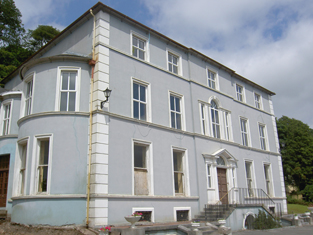
|
| Riverstown | An early 18th century house with fine plasterwork by the Francini brothers, the seat of the Browne family for two and a half centuries. The Brownes were still occupying the house in 1837 but John Carmichael is recorded as the occupier in the early 1850s when it was valued at £32.10 shillings. Restored in the 1960s by the Dooleys with help from the Irish Georgian Society. |

|
| Marino | The present house was built on the foundations of an earlier house which was burnt in the 1860s. Wilson refers to this earlier house on Great Island as the seat of Savage French in 1786. Marine remained the home of a branch of the French family and sold by Colonel Stuart French in the early 1970s. The National Inventory of Architectural Heritage entry states that this house was previously the home of the mathematician Philip Ronayne. Valued at £32 in the early 1850s it was occupied by Thomas G. French who held the property from Thomas R. Sarsfield. Knight writes that Thomas Sarsfield of Doughcloyne leased the lands of Ronayne's Grove, otherwise Hodnet's Wood, otherwise Marino to Savage French in 1755. Thomas G. French is also recorded as the occupier in 1814 and 1837. |

|
| Glyntown House | Unoccupied in the early 1850s, this house was held by Eliza McCaul from William B. Hoare. It was valued at £35. Bence Jones writes that this house, now demolished, was built by Samuel McCall and was owned in the 20th century by the Dring family. | |
| Ballinglanna | Occupied by J. Newsom in 1814 and E. Newsom in 1837. Edward Newsom held this house from Eliza McCaul and Louis Denay at the time of Griffith's Valuation when it was valued at £24. This house is named Glenville on the first Ordnance Survey map. |

|
| Kilcoolishal | Thomas Martin occupied a house valued at £18+ in this townland at the time of Griffith's Valuation. He held it from W. B. Hoare. | |
| Factory Hill | The seat of a branch of the Hoare family in the 18th and 19th centuries. Occupied by E. Hoare in 1814 but by 1837 leased to William Letchfield or Lichfield. He occupied the house in the early 1850s when it was valued at £25. Richard Martin of Factory Hill owned 506 acres in county Cork in the 1870s. A larger property, known as Dunsland House, occupies the site of Factory Hill on the 25-inch Ordnance Survey map of the 1890s. This latter property was later the residence of Joseph Pike and was burnt in August 1920 during the War of Independence. |

|
| Richmond | The home of the Mannix family in the late 18th and 19th centuries. Occupied by S. Oliver in 1814 and by R. Mannis [Mannix] in 1837. [Henry Mannix was resident in the early 1850s when the house was valued at £27 and held from Jonas Morris.] A house is still extant at the site. | |
| Woodville | Woodville was originally a home of the Cummins family. In 1800 Charlotte Cummins married Thomas Mannix. Occupied by N.W. Cummins in 1837 [and by Richard B. Isaack in the early 1850s when it was valued at £23]. Buildings are still extant at the site though extensive modern development has taken place in the area. | |
| Dunkettle | Seat of the Morris family from the late 18th century, occupied by Abraham Morris in 1814 and 1837. Wilson, writing in 1786, provides a detailed description of the demesne. At the time of Griffith's Valuation Jonas Morris held the property from George Newenham. The buildings were valued at £60. Bence Jones writes that this house was built on or close to the site of a previous house belonging to the Trant family. The house was sold in the late 19th century to the Gubbins family. |

|
| Glenburn | Glenburn was occupied by A. Lewis in 1837 and was held in fee by John T.C. Gibbings at the time of Griffith's Valuation. The buildings were valued at £20.15 shilllings. |

|
| Annmount | In the 1770s Falkiner Bart was resident and in 1786 Wilson refers to Annemount as the seat of Sir Riggs Falkiner. Occupied by the Reverend Mr Coghlan in 1814 and in 1837. By the time of Griffith's Valuation Nicholas M. Cummins held this house from the Reverend Coghlan. This house was burned down and all that now remains are the steps. |
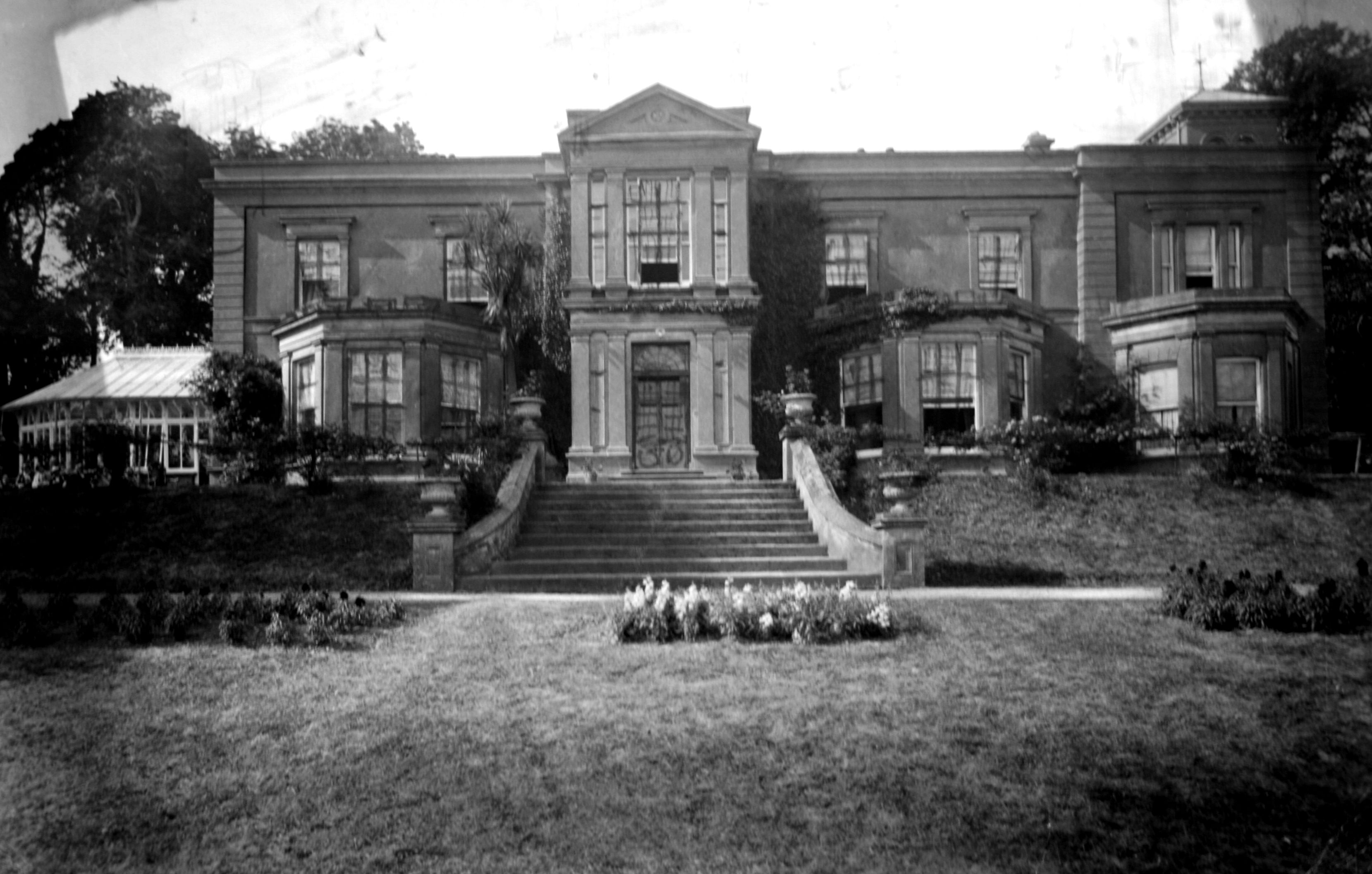
|
| Carrignavar | The castle of Carrignavar was from the mid 17th century the seat of this the senior branch of the McCarthy clan. Bence Jones writes that Carrignavar is a late 19th century castellated house incorporating the remains of the old castle. Lewis refers to Carrignavar as the seat of Justic McCarthy in 1837 and Justin McCarthy junior was resident at the time of Griffith's Valuation when the buildings were valued at £28. Bought by John Sheedy in the 20th century and sold by him in the 1950s to the Sacred Heart Fathers. The house is part of their college complex. |

|
| Ashton Grove | This house is marked Ashton Grove on the first Ordnance Surve map. John Cotter was the proprietor of Ashton, Cork, in 1814 and T. Cleary of Ballingohig in 1837. Thomas J. Cleary held the property from Henry Braddell at the time of Griffith's Valuation when the buildings were valued at £22. Cleary held a cornmill from Braddell in the townland of Kilrussane. James Fitzgerald held 122 acres of untenanted land and buildings valued at £26+ in 1906. |
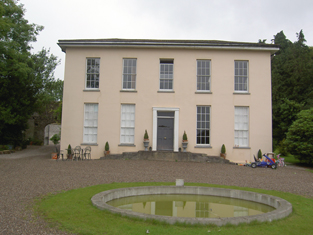
|
| Mitchellsfort/Fellfort | This house was the home of Mitchell Esq in the 1770s and 1780s. Occupied by Brooke Brazier in 1814 and by his son Henry B. Mitchell in the early 1850s. Henry B. Mitchell owned the property in fee and the buildings were valued at £52+. Slater noted it as the residence of R.L. Fell in 1894, now demolished. | |
| Rock Farm | The home of John Cantillon in 1837 and in the early 1850s when it was valued at £16 and held from Warren Hastings Rowland Jackson. | |
| Carrigrenan | Occupied by J. M. Ashlin (father of the architect George Ashlin) in 1837 and by the Reverend Robert Bury in the early 1850s. He held the house valued at £37 from Warren H. R. Jackson. The home of the Sullivans in the 20th century. | |
| Castleview | A Jackson property which was unoccupied in 1837. By the time of Griffith's Valuation Robert Delacour Beamish was resident in the house valued at £34 which he held from the Jacksons. The house was sometimes known as Ditchley House. Now functions as the Radisson Hotel, Little Island. |

|
| Little Island House | A Bury residence, occupied by Richard Bury in 1814, by Phineas Bury in 1837 and by his widow Eliza at the time of Griffith's Valuation. The house was valued at £51 and held from the Earl of Limerick. Bence Jones wrote n 1978 that the house was a ruin and the site is now occupied by industrial buildings. | |
| Flaxfort | Occupied by R. Martin in 1837 and by Mary Anne Martin at the time of Griffith's Valuatioan. The house was valued at £21 and held from John Purcell. It is no longer extant. |
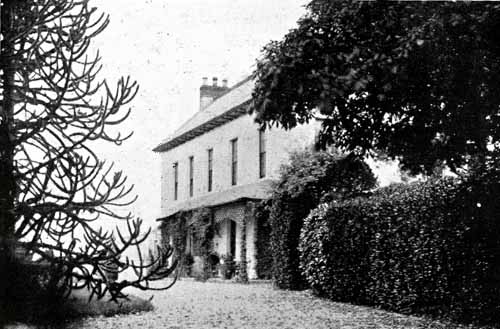
|
| Inchera | This house, also known as Sun Lodge, was the home of the Oliver family. Occupied by S. Oliver in 1814 and Silver Charles Oliver in 1837 and in the 1850s. The buildings were valued at £54 and the property was held from the Reverend Rowland Davis Gray. Owned by C.E. Murphy in the first half of the 20th century. Post 1950 it was destroyed by a fire. | |
| Hermitage | A house valued at £18, occupied by Eliza Martin and held from Robert Webb at the time of Griffith's Valuation. In the 20th century the home of Edmund Glen Browne. |

|
| Wood View | The home of J. Cremen in 1837 and Jeremiah Crimmin in the early 1850s, when the house was valued at £16 and held from Thomas Wyse. | |
| Waterview (Passage West) | Leased by Richard Neville Parker from Lord deVesci's estate at the time of Griffith's Valuation when it was valued at £76. Waterview was offered for sale in the Landed Estates Court by Parker's widow, Hannah Maria, in September 1874. Waterview is still in use as a residence. | |
| Rockenham | In 1850 Thomas Parsons Boland was leasing this house to Noble Johnson, when it was valued at £100. Lewis refers to it as Johnson's seat in 1837. The National Inventory of Architectural Heritage suggests it was built by the Johnsons in the 1820s. It is still extant and occupied. |
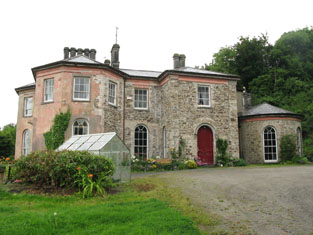
|
| Pembroke | The seat of Thomas Parsons Boland in 1837. Held in fee by him at the time of Griffith's Valuation, when it was valued at £48. Pembroke, together with many other of his houses, was included in the Sale Notice of Boland's estate in November 1859. It was offered for sale again in May 1868 when the house was noted as having "lofty and spacious rooms". In 1786 Wilson refers to Pembroke Town as the seat of Mr. Boland. In 1943 the Irish Tourist Association Survey noted that the Duke of Wellington was supposed to have stayed at Pembroke prior to embarking for the Peninsular wars. The house is no longer extant and a housing development has been built on the site. | |
| Horsehead | In 1850, Horsehead was being leased by James Craig from William Lane and was valued at £60. In November 1859 it was offered for sale as part of the Boland estate. Lewis refers to it as the seat of S. Lane in 1837, "an elegent mansion in the Tudor style". In 1943 the Irish Tourist Association Survey noted that the horses of the Duke of Wellington's cavalry had grazed on the front lawn at Horsehead prior to embarking for Europe. It is still extant and occupied. It was offered for sale in 2024. |
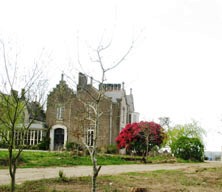
|
| Horsehead Cottage | Held from Thomas Boland's estate by Samuel Abbott in 1850 when it was valued at £38 10s. It was included in the sale of the estate in November 1859. It is no longer extant. | |
| Maryborough | In 1786 Wilson refers to Maryborough as the seat of Mr Newnhan and it was also a Newenham home in the 19th century, occupied by R. Newingham in 1814, by Edward Eyre Newenham in 1837 and at the time of Griffith's Valuation. He held the property in fee and the buildings were valued at £80. Thomas Sherrard held a mansion house valued at £61 in this townland in 1906. It is now part of a large hotel complex. |
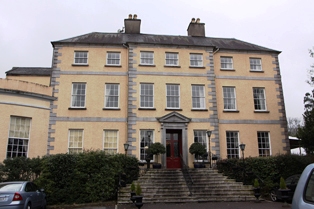
|
| Oldcourt | Oldcourt was the seat of the Goold family baronets until 1852 when it was bought by Alexander Glasgow. The sale rental of March 1852 includes a lithograph of Oldcourt. Griffith's Valuation records Glasgow holding the property in fee and the buildings were valued at £68. The Glasgows leased the house until it was bought in the early 20th century by Henry O'Shea although Alexander J. Glasgow is recorded as the occupier in 1906 when it was valued at £51. Henry O'Shea sold it to the Brothers of Charity in 1934 whose services used it as a Special Needs school. It is still extant. |
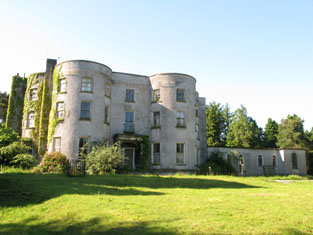
|
| Montpellier | A house occupied by the Reverend Morgan O'Donovan in 1837 and by Morgan O'Donovan in the early 1850s. The house was held in fee by the O'Donovans and was valued at £55. There is no trace of this house now as modern development has taken place in the area. | |
| Park Farm House | Henry Morrogh of Park Farm was a younger son of James Morrogh of Cork. He was resident at Park Farm in 1837 and in the early 1850s when the house was valued at £35 and held in fee. He married Helena Power. Mrs Helen Morrogh owned 828 acres in county Cork in the 1870s. | |
| Lauriston | A house valued at £40 at the time of Griffith's Valuation and held by Nicholas D. Murphy from Joseph Anderson. | |
| Lotabeg | Bence Jones writes that this house was built circa 1800 for Sir Richard Kellett 1st Baronet. Lewis gives D. Callaghan as the proprietor of Lotabeg in 1837. Poole Hickman was resident at the time of Griffith's Valuation, holding the property from William Galway. The buildings were valued at £87. Home of the Mahony family in the late 19th century. | |
| Lota Lodge | Occupied by James H.Smith Barry in 1837 and at the time of Griffith's Valuation when the buildings were valued at £75 and held from John Courtney. The residence of Arthur Frederick Sharman Crawford at the end of the 19th century. Bence Jones writes that this house was partially destroyed by fire in 1902 and rebuilt the following year. It is now the Vienna Woods Hotel. |

|
| Lota Park | Built in the early 19th century by John Power and purchased by Jeremiah James Murphy circa 1836. By the early 1850s occupied by Colonel Ludlow Beamish who held it from John Courtney. In the 1870s the home of Edmund Burke. In the 20th century home of Joseph Gubbins and later of Mrs Francis Mahony. Now operates as a health care facility. |

|
| Lota House | Occupied by William Hastings Greene in 1837 [of the Greene family of Greenville, county Kilkenny] whose interest in Lota was advertised for sale in January 1851. William H. Greene was married to Mary Sarsfield of Doughcloyne and held Lota on a long lease from Robert Courtenay. George A. Wood was tenant in 1851 and resident at the time of Griffith's Valuation. He held the house valued at £85 from John Courtney. Now a hospital site. |
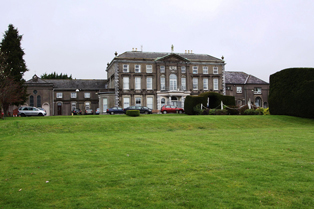
|
| Lotamore House | The residence of the Honourable C.L. Bernard in 1837 and of Frederick Hamilton at the time of Griffith's Valuation. He held the house valued at £64 from William C. Rogers. The interest of Joseph Harrison in Lotamore was for sale in February 1871. Sir William Bartholomew Hackett was the tenant. Owned in the late 19th century by the Perrier family and the Mahonys. Wilson writing in 1786, refers to Lota as the seat of Mr. Rogers. It has operated as a guesthouse for many years. |

|
| Kilbarry | In the mid 19th century occupied by George Wise and held from James H. S. Barry. The buildings were valued at £35. | |
| Ballincurrig | W.C. Logan occupied Ballincurrig Cottage in 1837 and William Coppinger occupied a house at Ballincurrig valued at £33 and held by him in fee at the time of Griffith's Valuation. | |
| Cleve Hill | Samuel Perrott was residing at Cleve Hill in 1837 and in the early 1850s when the house was valued at £68 and held from Alexander McCarthy. Cleve Hill a modern family mansion on 13 acres was advertised for sale in October 1873, the estate of Joseph Gadsden Nash and Arthur Power Harty, bankrupts. | |
| Clifton | John Moore Travers inhabited this house in the first half of the 19th century. At the time of Griffith's Valuation Clifton was valued at £65 and held from the Earl of Bandon. John M. Travers only child Elizabeth married in 1827 Sir William Henry St Lawrence Clarke, Baronet. Later the home of Nicholas Murphy and in the 20th century in use as a convent. | |
| Besborough | In the 1770s the residence of Allen Esq. The seat of the Pike family for most of the 19th century. Occupied by J. Spence in 1814 and by Ebenezer Pike in 1837 and in the early 1850s. He held the property from the representatives of Bousfield and the house was valued at £78. This house was used as a convent in the 20th century. http://www.askaboutireland.ie/reading-room/history-heritage/big-houses-of-ireland/bessborough-house-and-est/index.xml | |
| Frankfield | Located on the side of what is now the Frankfield Golf Club, Frankfield House was occupied by S. Lane in 1837 and by the Very Reverend H. J. Newman in the mid 19th century. Reverend Newman held it from William Lane and the buildings were valued at £60. | |
| Lee Cottage | Marked on the first Ordnance Survey map this house was occupied by Henry O. Seward in the early 1850s when it was valued at £52 and held from the Ecclesiastical Commissioners. Now incorporated into the university. | |
| Castlemahon | Seat of the Chatterton family, occupied by Sir James Chatterton in 1814 and Sir William in 1837 and at the time of Griffith's Valuation when it was valued at £47. The property was held from the Ecclesiastical Commissioners. The building now houses a youth centre run by the Redemptorist Order. |
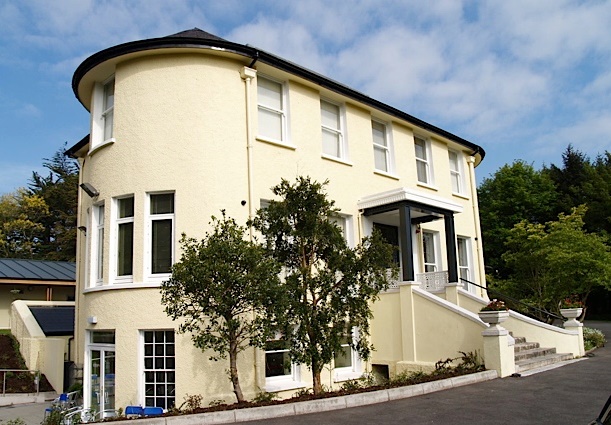
|
| Ferney | Ferney was the residence of Mrs Coote in 1814 and of J.H. Manley in 1837. Joseph Manly occupied the house valued at £68 at the time of Griffith's Valuation. He held it from Sir William Chatterton. This house is still extant. | |
| Lakeview | Occupied by Miss Allen in 1837 and by William Prittie Harris in the early 1850s when the house was valued at £28 and held from Sir William Chatterton. In the 1870s Richard Harris of Lakeview, Cork, owned 169 acres. This house no longer exists. | |
| Ringmahon Castle | The proprietor of Ring Mahon Castle in 1837 was J. Murphy. James Murphy occupied the house valued at £68 in the early 1850s and held the property from William Crawford who held from the Chattertons by lease dated 1797. This property was still in the possession of the Murphy family at the end of the 19th century. | |
| Dundanion Castle | The residence of the architect Sir Thomas Deane in 1837, valued at £78 in the early 1850s and held from Richard Sampson. Sold by Sir Thomas to William Wise in 1860 and by Wise to William Thornton in 1868. A residence is still extant at this site. | |
| Grange | H. Conron occupied Grange in 1837 and at the time of Griffith's Valuation when the buildings were valued at £40 and held from J.D.C. Beamish. Hatton Condon was still living at Grange in the 1870s. In 1894 Slater records Grange as the seat of E.R. Conron. This house no longer exists. | |
| Ashton | A house occupied by John Cotter from at least 1814 until his death in 1864 and by Mrs Catherine Cotter until at least 1871. It is not clear if John Cotter was a member of the Cotter family, baronets. The house is now part of the Ashton School complex. | |
| Ballyphilip House | This property was leased to Samuel Adams Austen and occupied by John Forrest in the early 1850s. When the Newenham's fee of Ballyphilip was for sale in 1865 David Cagney was resident. A house still exists at the site. | |
| Charlemont House | Charlemont House was leased by Charles Evanson from Nicholas G. Allen at the time of Griffith's Valuation, when it was valued at £20. It was included in the sale of Evanson property in the Landed Estates Court in November 1862. It is still extant. | |
| Woodhill | Originally this property belonged to the Dennis family. Following the marriage of Elizabeth Dennis to Cooper Penrose, a Quaker, of Waterford, it passed into the possession of the Penrose family, who enlarged the house. Another Cooper Penrose was the occupant in 1814 and in the mid 19th century holding the property from James Murphy. The buildings were valued at £100. The house was demolished circa 1980s. | |
| Trantstown | A Trant home in the 18th century, occupied by Mrs Pepper in 1837 and by James Barry in the early 1850s. He held the house valued at £8+ from Lady A.H. Fitzgerald. Buildings are still located at this site. | |
| Shanakiel | Daniel Leahy is recorded as the occupier of Shanakiel House in the first half of the 19th century. The house was valued at £85 in the early 1850s and held from the Earl of Cork and Orrery. This house no longer exists and its site is located in the grounds of a hospital. | |
| Ballynaroon | Griffith's Valuation records a house valued at £13.15 shillings in this townland in the mid 19th century. It was occupied by Charles W. Welland and held from the representatives of Viscount Midleton. The house is named The Highlands on the 25 inch to the mile map. Only yard buildings now remain at this site. | |
| Corbally South | Catherine Delany held buildings valued at £11 from William J. Sheehy in Corbally South at the time of Griffith's Valuation, with 148 acres. Buildings are still located at this site. | |
| Ballinderrig | Ballinderrig is marked on the first edition Ordnance Survey map and was occupied in the mid 19th century by Jane Cantillon. She held the property valued at £13+ from Eliza Bury. Catherine Cantillon was also resident in the townland at Courtstown Cottage Grid Ref W774 720. By the publication of the 25-inch Ordnance Survey map in the 1890s the latter property has become known as Courtstown House. It is still extant. | |
| Rathpeacon House | At the time of Griffith's Valuation, Rathpeacon House was occupied by William le Fanu leasing from Richard Thomas when the house was valued at £27. In the 1870s it is recorded as the residence of John Davis. | |
| Green Mount (Passage West) | Robert Hodgson was leasing Greenmount from the Boland estate at the time of Griffith's Valuation, when it was valued at £19. It is still extant and occupied. |
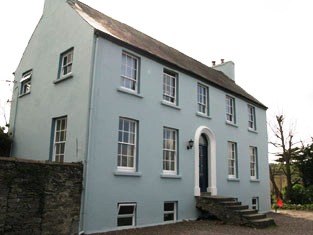
|
| Mansfield (Passage West) | At the time of Griffith's Valuation, William Browne was leasing this property from the Boland estate, when it was valued at £56. It is still extant. | |
| Mounthovel House | In 1786 Wilson refers to Mounthovel as the seat of Mr. Farmer. At the time of Griffith's Valuation, Mout Hovel House was occupied by Edward Newenham leasing from the Atkins estate and valued at £8. It is no longer extant and the area is now occupied by modern housing. | |
| Hop Island | At the time of Griffith's Valuation, Osborne Edwards was leasing this property from the Chatterton estate when it was valued at £16. It is labelled Hop Island on both the 1st and 25-inch edition Ordnance Survey maps. This may be the property referred to by Wilson as Red Island, the seat of Rev. Mr. Saunders, in 1786. A house is still extant at the site. |

